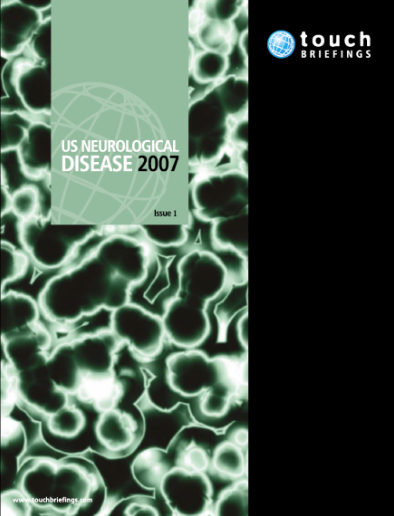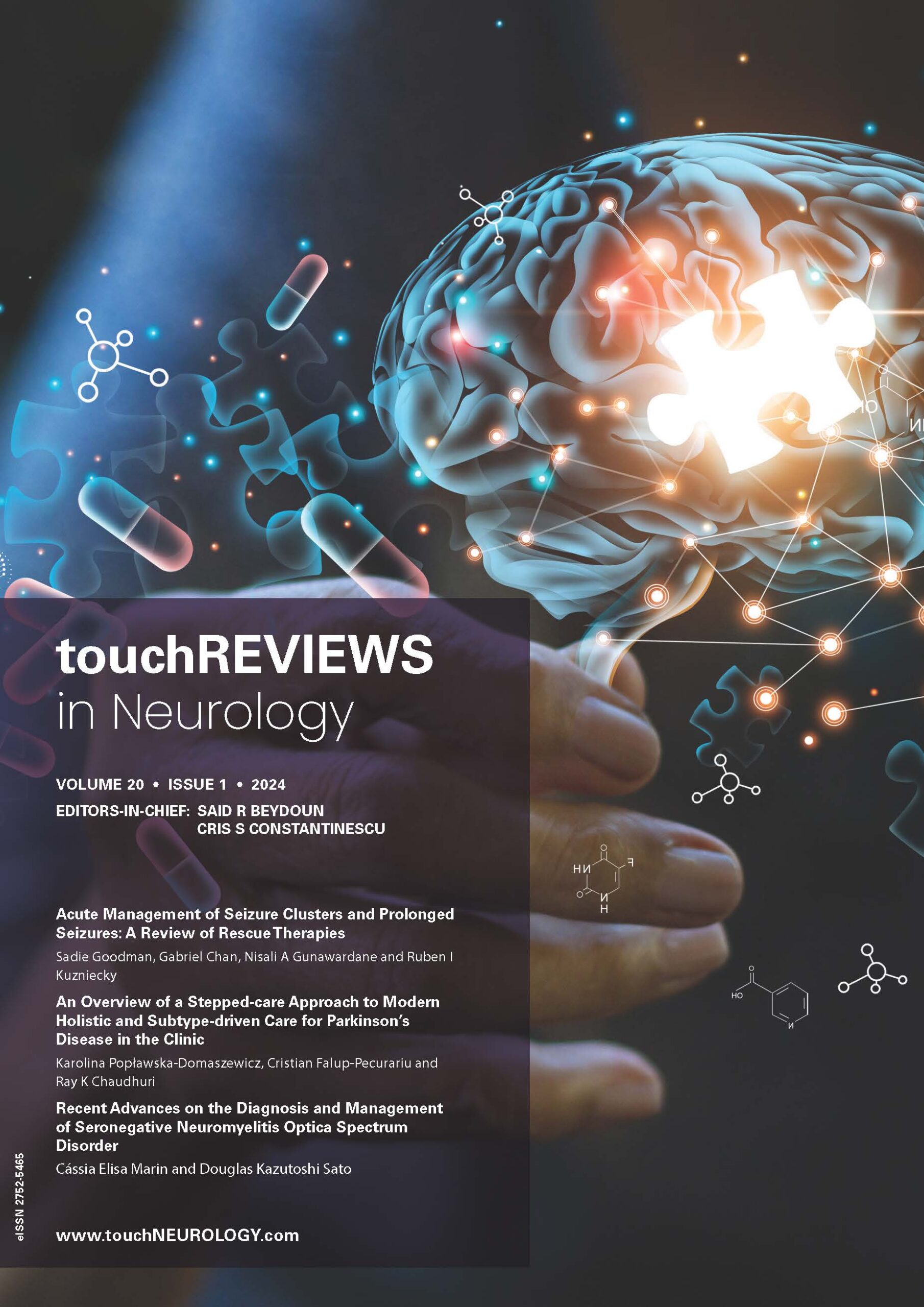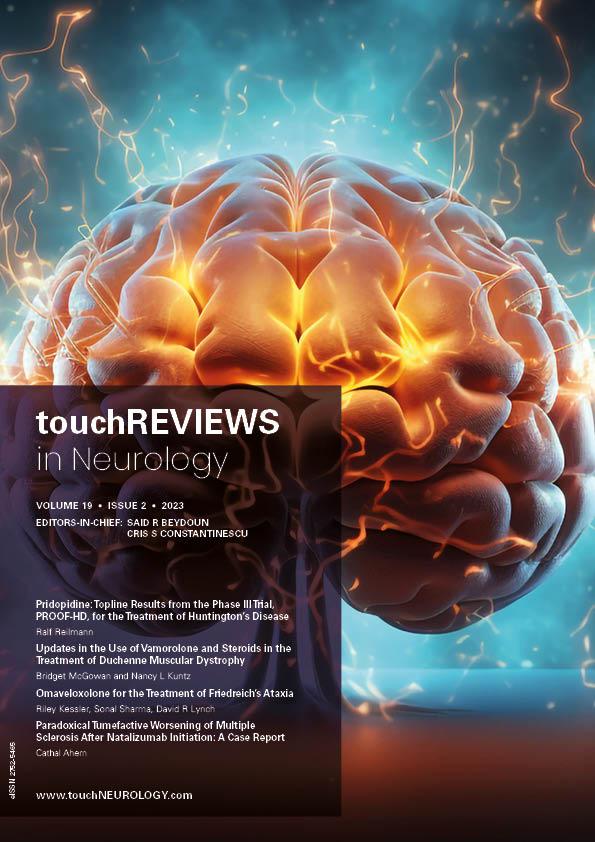
US NEUROLOGICAL DISEASE – VOLUME 2 – ISSUE 1 – SPRING 2007
Welcome to the Spring edition of US Neurological Disease! This edition focuses on the latest data and reports in the areas of surgery, pediatrics, pain management, dementia and more!
Surgery
The application of computer-assisted image guidance technology to these surgical procedures allows creation of new methods to address these challenges by providing the needed 3-D orientation that ultimately improves accuracy, efficiency, and safety. The concepts described below represent the initial step of combining computer-assisted image guidance technology with standard endoscopic surgical procedures, which may ultimately […]
Pediatric Neurology
NF-1 NF-1, also known as von Recklinghausen’s neurofibromatosis, is a common neurocutaneous disorder with an incidence of one in 3,000. Although genetic testing is available, NF-1 remains a clinical diagnosis. Two of seven diagnostic criteria, as developed by the National Institutes of Health (NIH) consensus conference, must be met to make the diagnosis (see Table […]
Surgery Childhood OSA is typically recognized between two and eight years of age when the tonsils and adenoids are the largest in relation to the underlying airway size.2 Adenotonsillar hypertrophy in the presence of a narrow airway and/or decreased oropharyngeal muscle tone is considered the most common cause of OSA in children. Therefore, adenotonsillectomy (TNA) […]
Huntington's Disease
Current medical care focuses primarily on symptom management, optimizing functions that are in continual decline, and the provision of ever-increasing levels of assistance. Symptomatic therapies using existing medications can help specific symptoms, such as depression, emotional dyscontrol, obsessive thinking, psychosis, chorea, rigidity, dysphagia, and weight loss. While medications, counseling, and rehabilitative modalities may improve the […]
Pain
These three streams, which provided the impetus for the explosion of knowledge of the complexity of chronic pain and the role of psychosocial and behavioral factors along with physical ones in understanding and treating chronic pain patients, culminated in the creation of the first multidisciplinary pain treatment centers. Rehabilitation-oriented multidisciplinary pain centers (MPCs) exploded onto […]
Overview of FibromyalgiaFM is a common condition with an estimated prevalence of 2% of the general population (3.4% for women, 0.5% for men). Although all ages are affected, the prevalence increases with age, reaching greater than 7% in women aged 60 79 years. Given that the vast majority of FM patients are female, there is […]
Although not life-threatening, the disorder can lead to severe persistent pain and disability. Moreover, the unpredictable nature of dystonia, with symptoms fluctuating or stabilizing for a period of time, can have a profound impact on the patient’s quality of life that is comparable to that seen in multiple sclerosis, Parkinson’s disease, and stroke.5,6 Because the […]
Currently, the prevalence of cervical dystonia in the US is estimated to be greater than 90,000. Other studies show that its prevalence differs among ethnic groups.5–7 Claypool et al., in 1995, reported an incidence of 1.2 per 100,000, while an incidence of 5.4 per 100,000 was published in a practice-based survey of dystonia in Munich.7 […]
Parkinson’s Disease Parkinson’s disease (PD) is a slowly progressive neurodegenerative disease characterized by tremor, rigidity, bradykinesia, and postural instability. It is common in middle or late life with prevalence rising to 1% in people over 60 years of age. Established basal ganglia brain structures currently targeted for PD DBS include the globus pallidus interna (GPi), […]
Imaging
Recently, the widespread use of magnetic resonance imaging (MRI) has called attention to the wide range of leukoencephalopathies that can be encountered clinically—these disorders highlight disconnection as a central theme of cognitive neuroscience.1 In this article, the leukoencephalopathies will be discussed as common clinical problems that illuminate the role of white matter in both normal […]
Dementia
With the aging of the population, promotion of cognitive health has emerged as a priority in public health. Most notably, Alzheimer’s disease (AD) alone remained one of the top 10 causes of mortality throughout the 20th century.1 The public health implications of cognitive status increase dramatically when it is recognized that AD is but one […]
Narcolepsy
Humans afflicted with narcolepsy suffer a variety of symptoms due to the dysregulation of the REM cycles.3-5 These irregularities cause EDS, leading to uncontrollable urges to sleep known as sleep attacks even in active daily events. This sudden onset of sleep occurs primarily when participation level is low (watching television, reading, sitting in class, etc.).1 […]
PrevalenceThe prevalence of narcolepsy with cataplexy occurs with high variability, depending on the study population, and is thought to affect approximately 0.02–0.18% of the general population in Western nations.1,5 The true prevalence of narcolepsy without cataplexy is unknown and has been reported to range from 1%6 to 36%7 of narcolepsy cases, but may be as […]

Trending Topic
Article highlights Multiple screening tests are available to screen patients for cognitive impairment, and the Confusion Assessment Method is a helpful test to screen for delirium in the immediate postoperative period. Medicine reconciliation and identification and removal of potentially inappropriate medications per Beer’s list are important tasks that should not be overlooked, especially during a preoperative appointment. […]
Journal Archive
touchREVIEWS in Neurology is a peer-reviewed, free-to-access, bi-annual neurology journal comprising review articles, case reports, practice guides, theoretical discussions, and original research. It features balanced and comprehensive articles written by leading authorities, addressing the most important and salient developments in the field of neurology.
Latest articles videos and clinical updates - straight to your inbox
Log into your Touch Account
Earn and track your CME credits on the go, save articles for later, and follow the latest congress coverage.
Register now for FREE Access
Register for free to hear about the latest expert-led education, peer-reviewed articles, conference highlights, and innovative CME activities.
Sign up with an Email
Or use a Social Account.
This Functionality is for
Members Only
Explore the latest in medical education and stay current in your field. Create a free account to track your learning.





